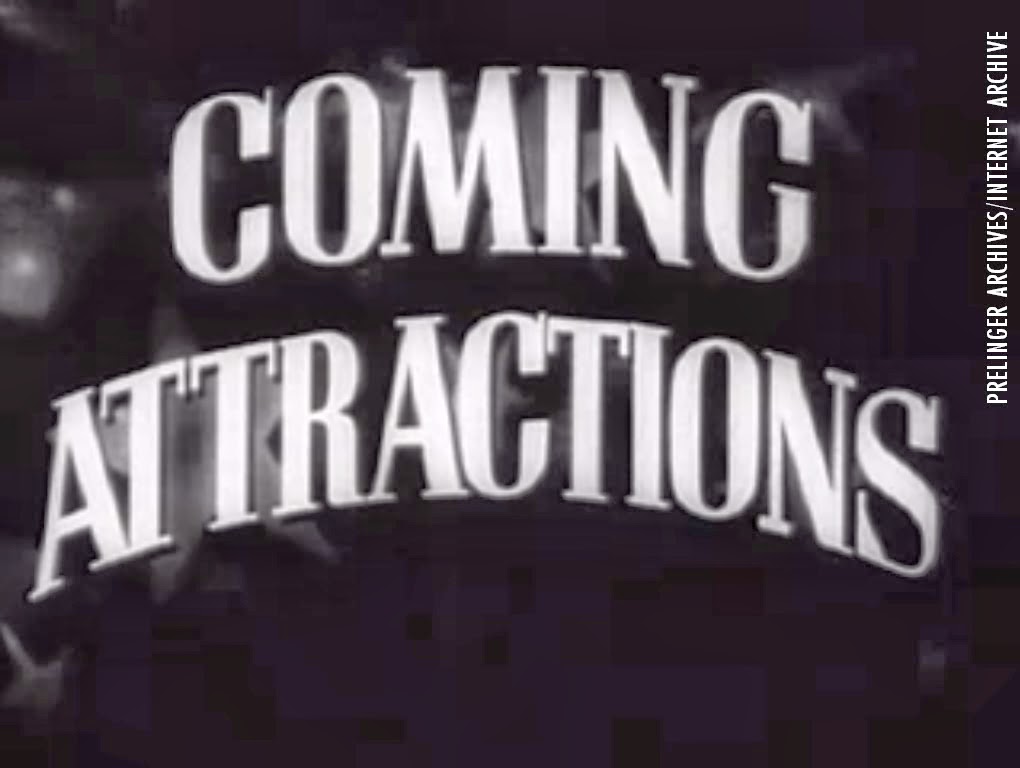 |
Opening Title to Jerry Fairbanks & Robert Carlisle's
Unusual Occupations from 1948. |
From the mid-1930s through the late 1940s, chances are that moviegoers possibly viewed one of three
Paramount short subjects produced by Jerry Fairbanks (1904-1995) and Robert Carlisle (1888-1974).
The first one was
Popular Science, based off the
monthly scientific periodical of the same name. Narrated by actor and radio commentator Gayne Whitman (1890-1958),
Popular Science showcased many scientific breakthroughs, along with practical and bizarre inventions.
Innovations shown in the Popular Science series were the introduction of contact lenses (known as “invisible glasses” then), the first answering machine, early experiments on solar energy, bandleader Fred Waring and
his electric blender,
Philo Farnsworth’s early television demonstrations, a tour of Max Fleischer’s animation studio, the Northrop “Flying Wing” jet aircraft, the introduction of frozen “TV dinners”, and much more.
The second series,
Unusual Occupations, showcased persons that had unique and unusual career prospects. The series premiered in 1937, originally under the titles
That’s Their Business and
It’s a Living. The series was narrated by longtime broadcast announcer Ken Carpenter (1900-1984).
Some of the
Unusual Occupations showcased included a “Scribble Fortune Teller”, a “Toothpick Bridge Builder”, a “Cellophane Straw Artist”, a “Chewing Gum Artist”, and a Hollywood “scream” artist for motion pictures. Various hobbyists, collectors, pacesetters, and trailblazers were also featured- including a collector of vintage Edison Cylinder Phonographs and records, a “wild west museum” proprietor, and
Adeline Gray- who achieved fame as the first person to make a test jump with a parachute made entirely out of nylon.
Several personalities were featured in
Unusual Occupations, including
Gene Autry and his horse, “Champion”; John Barrymore and his collection of “oddities”, and the appearance of a young Theodore Geisel- better known to the world as iconic children’s author
“Dr. Seuss”.
A third Fairbanks-Carlisle series for Paramount came out in 1941, called
Speaking of Animals. It was produced in collaboration with noted cartoon animator
Tex Avery. This short film series combined live-action footage of animals with animation, giving the featured animals the chance to talk or sing popular tunes of the day. While
Popular Science and
Unusual Occupations were filmed in color (first in two-strip Cinecolor, then in Magnacolor), this series was filmed in black and white.
As the United States entered the Second World War,
General Douglas MacArthur- a good friend of Jerry Fairbanks, communicated with the producer over the phone. The General suggested that the theater-going audience at home should know that when the nation’s brave men and women go into battle, that they should be well prepared. This would give the
Popular Science series unlimited access to behind-the scenes preparation for battle, along with advancements in United States military technology.
After World War II ended in 1945, Fairbanks decided to expand into television production, in addition to producing the Paramount features along with industrial productions. Co-producer Robert Carlisle had left at the time, leaving Fairbanks to produce solo. Seeing that television would threaten motion picture exhibition and distribution, Paramount gave him an option- to abandon the idea of television production, or that his short subjects would no longer receive Paramount release. Fairbanks chose to go with television and industrial production in 1949, bringing an end to the three series he produced for Paramount. Only one would be reformulated into a television series in 1950, as Fairbanks filmed a pilot episode of
Popular Science.
Throughout the combined series’ theatrical run, they won numerous Academy Awards along with a special commendation for
Popular Science from the U.S. War Department for covering developments on military technology.
In 1955, Paramount Pictures decided to sell off their entire short subject film holdings to U.M.&M. Television Corporation (excluding the
Popeye cartoons, which were sold off to Associated Artists Productions). Shortly thereafter, U.M.&M. became part of National Telefilm Associates, or NTA. Just like what its predecessor did to the Paramount cartoons and short features (which still makes us film purists cringe today), they altered the titles and removed references to the studio.
Jerry Fairbanks would re-acquire the rights to his old Paramount film series later on, and the rights to the three series would pass on to the hands of
Shields Pictures, Inc. - operated by film preservationists Mark Punswick and Mary Riley.
The films appeared (with original opening/closing Paramount titles from the original 35mm nitrate materials) on American Movie Classics in the mid-1990s. That’s how I was exposed to these classic short subjects. After AMC’s unfortunate demise in late 2002, these shorts were never shown on television again. The company still offers the short subjects to major producers for stock footage elements.
In 2007, the company released a “best of” compilation of the Popular Science series on DVD (which is now out of print). In 2010,
The Epoch Times wrote an article on the company’s film preservation efforts.
During that same year, the company launched an app for the Apple iPhone/iPad- containing the 1938
Popular Science Fleischer Cartoon Studios tour short subject (sourced from a high-definition transfer of the original 35mm nitrate print). Animation historian Jerry Beck wrote a piece about the company's app, featured on the
Cartoon Brew website in June 2010.
Since they have been working on HD transfers of the classic Fairbanks-Carlisle Paramount short subject series, let’s hope that these classic shorts will return to television- and hopefully will be released on Blu-Ray/DVD (or on some streaming platform) in the near future.






